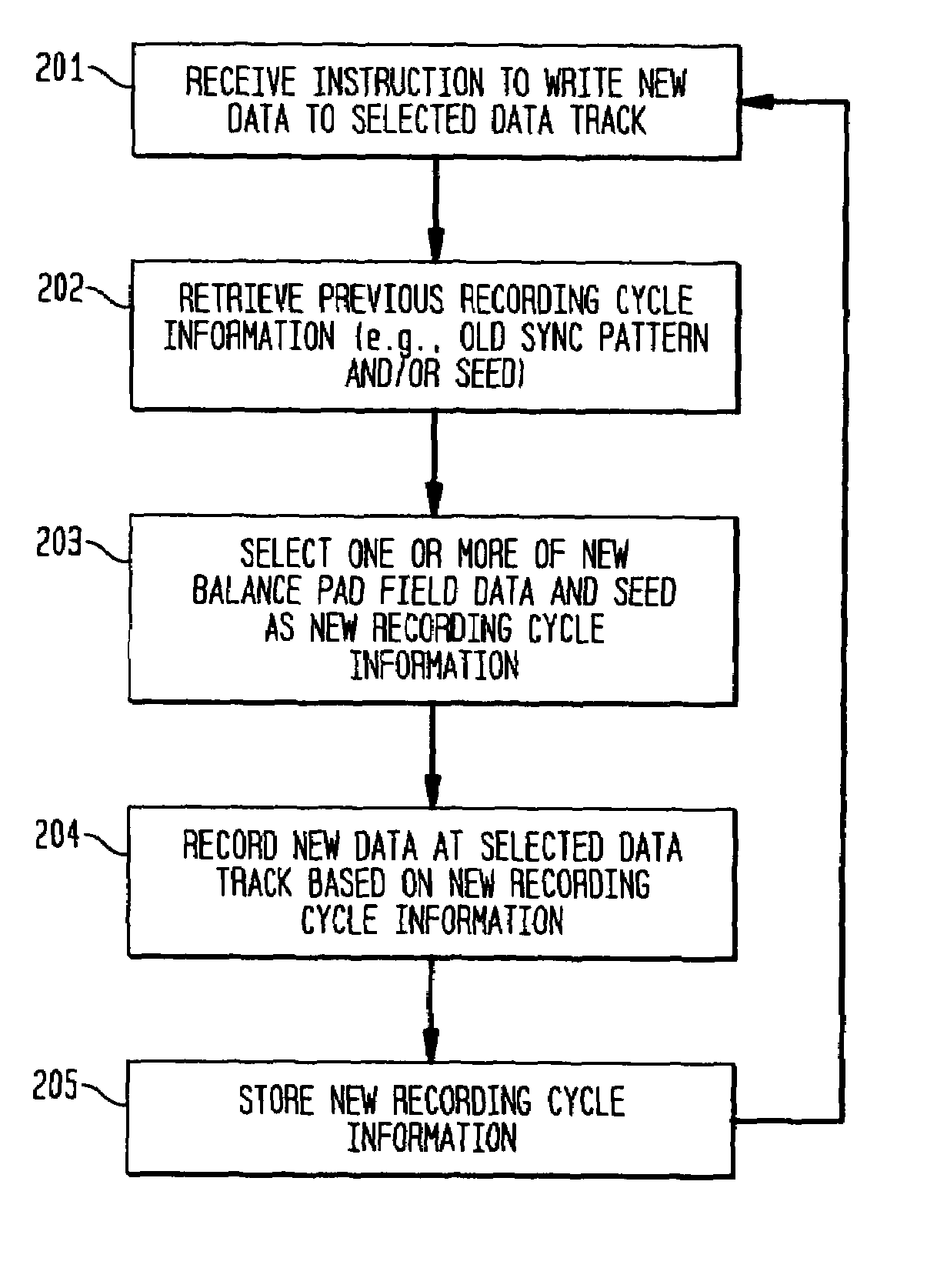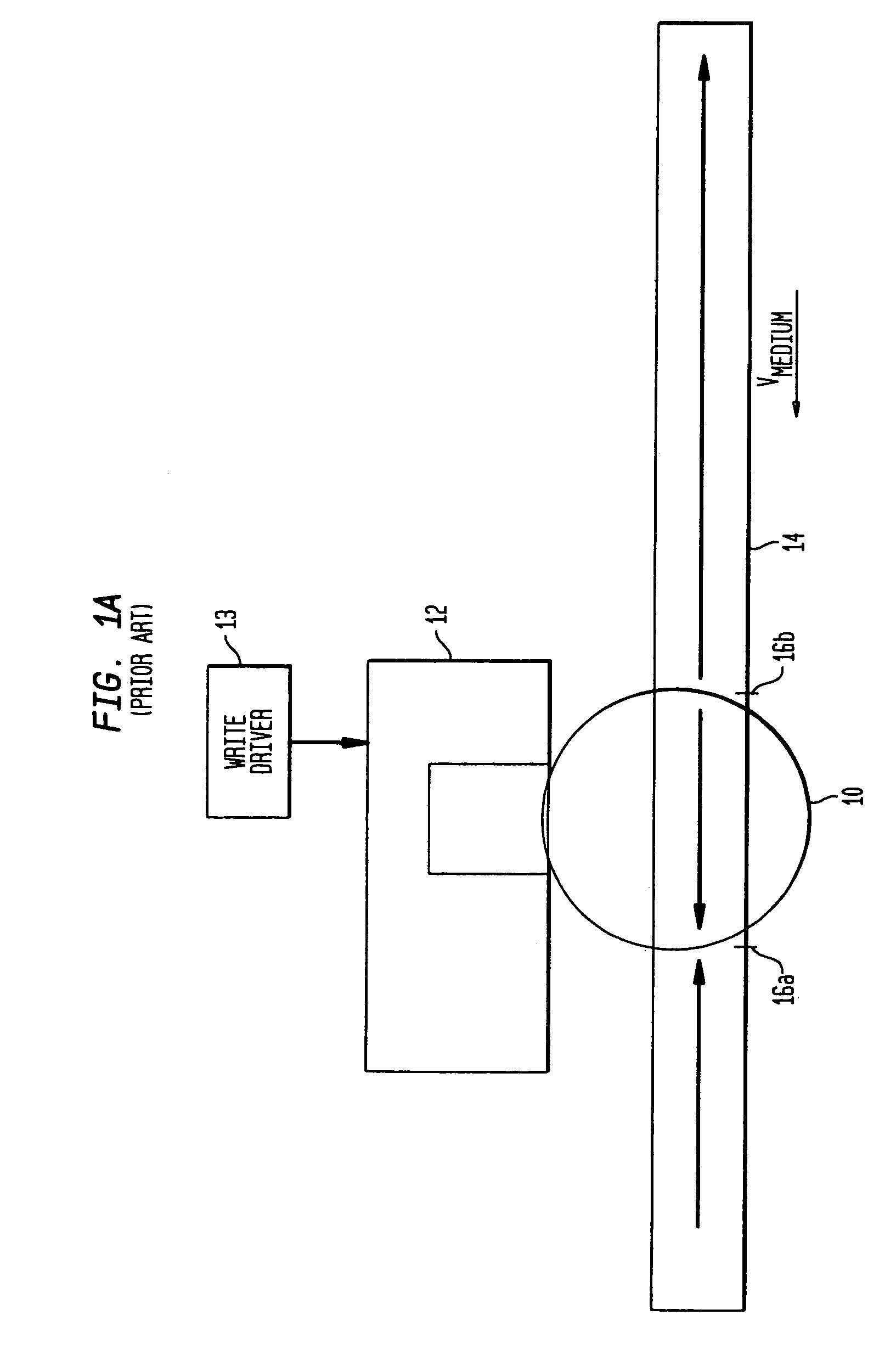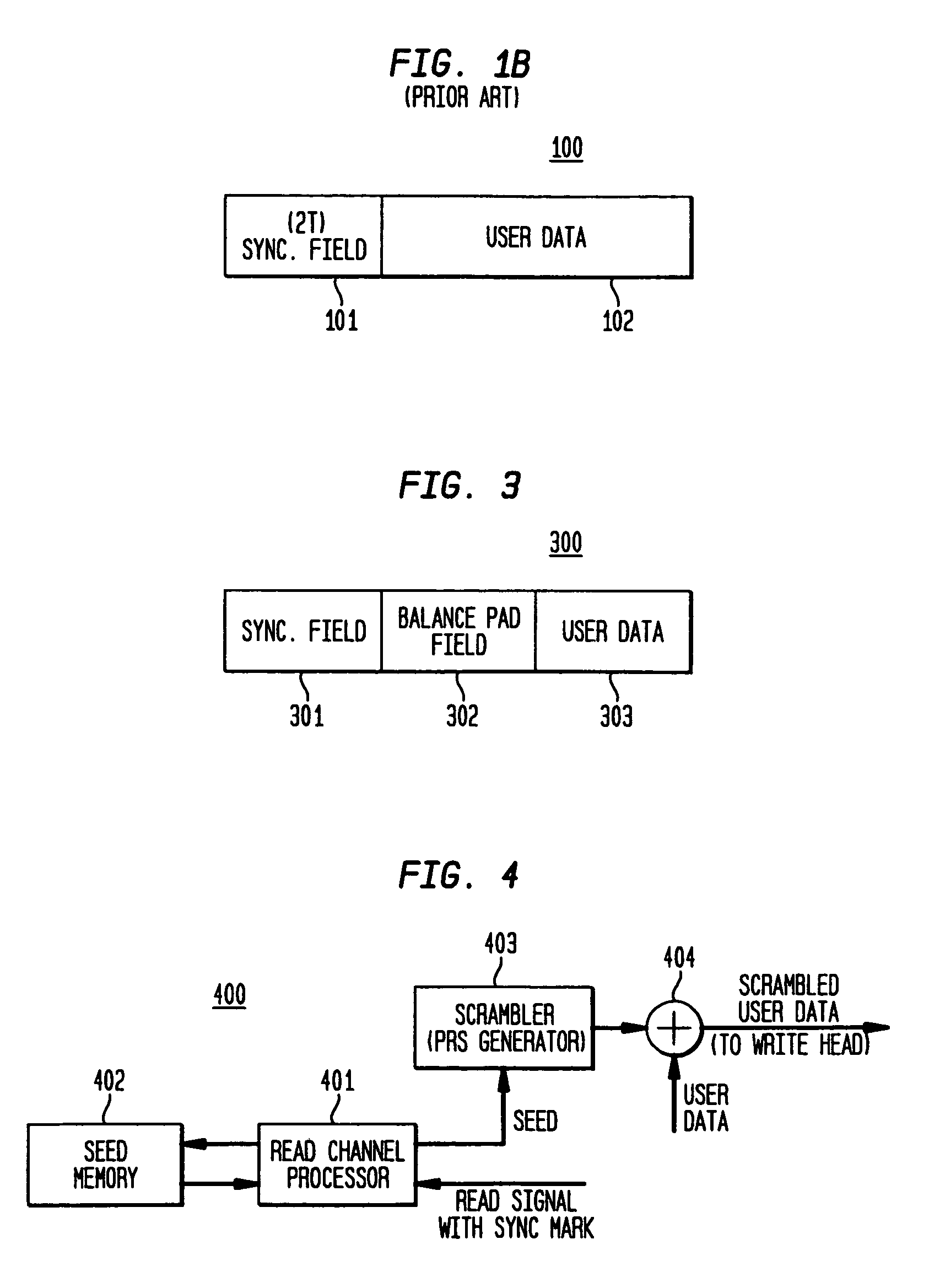Over-writing data in a recording system
a data recording and data technology, applied in the field of data recording in a communication system, can solve problems such as read errors, and achieve the effect of avoiding read errors within the user data field and reducing read errors
- Summary
- Abstract
- Description
- Claims
- Application Information
AI Technical Summary
Benefits of technology
Problems solved by technology
Method used
Image
Examples
Embodiment Construction
[0026]FIG. 2 shows a method of recording data in a data sector of a magnetic recording medium, in accordance with exemplary embodiments of the present invention. At step 201, the method receives an instruction to write new data to a selected data sector of a recording medium. At step 202, the method retrieves one or more previous parameters of recording cycle information employed to write previous user data to the selected data sector. Recording cycle information might include one or more of an old balance pad pattern and an old scrambler seed values employed to record the old data on the selected sector. Balance pad patterns and scrambler seed values are described in further detail below. At step 203, based on the recording cycle information, the method selects new parameters for recording cycle information corresponding to the data sector, such as one or more of a new balance pad pattern and a new scrambler seed value. At step 204, the method records the new data at the selected d...
PUM
| Property | Measurement | Unit |
|---|---|---|
| magnetic field | aaaaa | aaaaa |
| coercivity | aaaaa | aaaaa |
| velocity | aaaaa | aaaaa |
Abstract
Description
Claims
Application Information
 Login to View More
Login to View More - R&D
- Intellectual Property
- Life Sciences
- Materials
- Tech Scout
- Unparalleled Data Quality
- Higher Quality Content
- 60% Fewer Hallucinations
Browse by: Latest US Patents, China's latest patents, Technical Efficacy Thesaurus, Application Domain, Technology Topic, Popular Technical Reports.
© 2025 PatSnap. All rights reserved.Legal|Privacy policy|Modern Slavery Act Transparency Statement|Sitemap|About US| Contact US: help@patsnap.com



